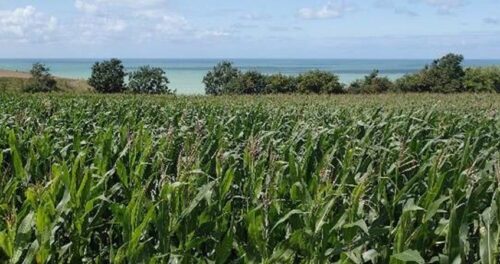We have been hearing about environmental pollution, loss of biodiversity, energy crisis, and the sustainable environment since long. So many things have already been infused in school syllabi as well. But how many of us really apply in our real life the things about which we have read in our classes? If you collect yourselves and think seriously, you may find that you are still not as careful as you are supposed to be.
We will have to take responsibilities. People in societies take keen interest in talking about environment but only some persons try to do something for it.
Rather, many people tend to escape away from their own moral responsibilities of tightening the tap after consuming water, switching off lights while going out of rooms, and shutting down the computer system after use.
Our world cannot be saved from the overhead dangers of global warming and the climate change this way. We will have to take responsibilities of protecting these resources too. We cannot continue our practice of polluting our resources on and on as there is a tolerance limit for the environment too.
The environment of any place or area can support only a fixed number of organisms, up to a fixed period of time. This is called as carrying capacity of the environment.
The unplanned technological development
Today, in the unplanned technological development, resources are exploited, used or overused up to such an extent that the ecosystem loses its carrying capacity.
On the other hand, an ecosystem has the capacity of absorbing and assimilating pollutants disposed into it by human beings up to a certain limit. But a time comes when the ecosystem loses its carrying capacity to absorb and assimilate these pollutants. As a result they join natural cycle of substances and accumulate in consumers to cause deadly bio- magnification.

Thus, an imbalanced environment can no longer support and sustain life existing in it. Since resources are limited, and most of the resources that support life and build up the back bone of today’s development come from the biodiversity sources, it is difficult rather impossible for the natural environment to sustain the exploding human population.
The earlier model of unplanned technological economic development had no provision of equity. Thus economic disparity and poverty increased in a fast speed. Poor continued to become poorer whereas the rich continued to become richer.
The U.S. President Franklin D. Roosevelt in one of his public addresses had once said that the “test of our progress is not whether we add more to the abundance of those who have much; it is whether we provide enough for those who have too little”.
Sustenance of mankind and the balance of nature have close links with the diversity of cultures and organisms. Many cultures and traditions enrich and support biodiversity and biodiversity is essential for our growth and progress.
Thus, sustenance of mankind and eco- friendly activities that promote traditional knowledge and traditions enrich and support biodiversity, and biodiversity is essential for our growth and progress.
The sustenance of mankind and eco- friendly activities that promote traditional knowledge and traditional practices are important for the conservation of our age old traditions, culture, biodiversity and traditional knowledge.
The balance of input and output in nature is a situation in which different things exist in proper, correct or good proportion. Every component of nature, its size, its number and functioning have been put well and wisely to develop the diversity of life on this planet.
Any disturbance or disorder that can be made by human being in the environment may create a disorder and imbalance in the structure and functioning of the dynamic environment developed by the nature.
The input must always be balanced by the output in an ecosystem. The ecosystem is the smallest unit of the biosphere which comprises different levels of physical and biological components interacting among themselves.
If the number of producers (number of all the green plants) in an ecosystem increases, we say that there is an increase in the input of an ecosystem. To balance the input, the output or the production by green plants should also be utilized proportionately.
The cycling of materials
All the species of plants and animals have their unique roles to play in the overall functioning and building up of the ecosystems of the globe. This interaction leads to the Flow of Energy obtained by plants from the Sun and the Cycling of Nutrients or the bio-geo chemical Cycles that are necessary for keeping up the balance of nature.
Removal of just one species from an ecosystem is sure to interrupt the processes of flow of energy and cycling of nutrients in the ecosystem. It will create an imbalance in the nature. Since all the ecosystems are linked together to constitute the biosphere, the local disturbance most often creates a big global disturbance. Thus, biodiversity is directly linked to the balance of nature.
The Silent Spring
A great disturbance in nature had occurred when in 1945 DDT was used for the first time against Malaria vectors in the World War II. Unfortunately, the inventor of this deadly powder was awarded a Nobel Prize. But when DDT came in civilian use and started accumulating in animal tissues a great disaster followed in Nature.
That was the time when Rachel Carson’s book – The Silent Spring was published in 1962. The book appeared in September of that year and the result that followed its publication forced the Governments to ban the application of DDT. It caused the revolutionary changes in the laws affecting our air, land, and water.
Carson’s concern for the future of our environment echoed powerfully throughout the world, and her book was instrumental in launching the environmental movement.
Our environment cannot be protected unless each one of us stands fast with a will to do anything and everything for this planet. Nature cannot continue on itself if we continue our practice of polluting the resources and do not stop the misuse and overuse of these resources because environment has a tolerance limit.




